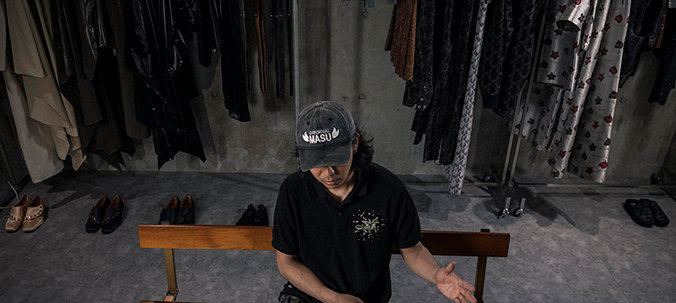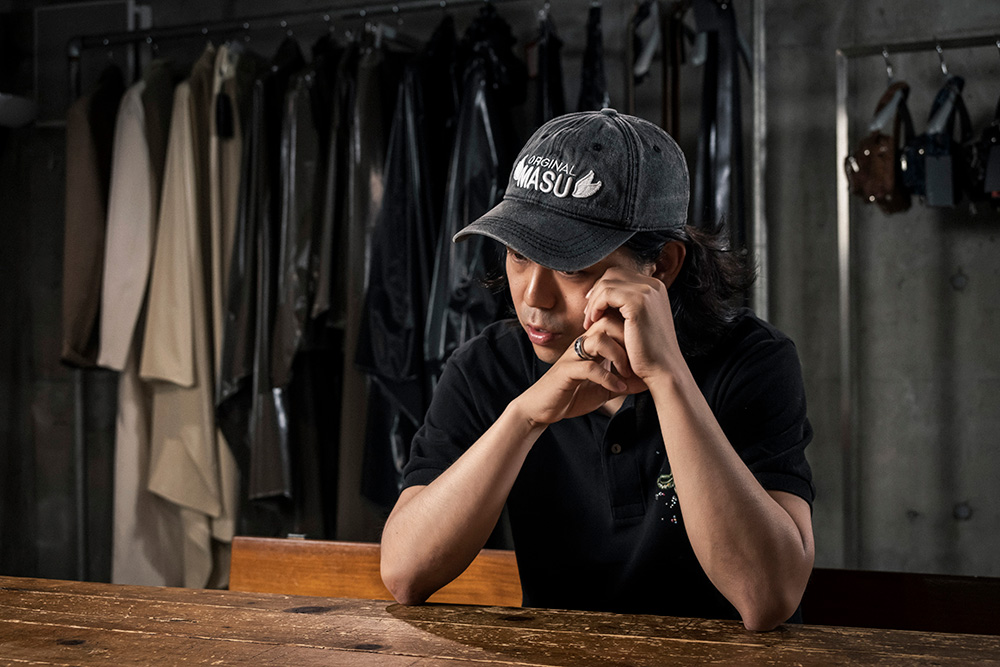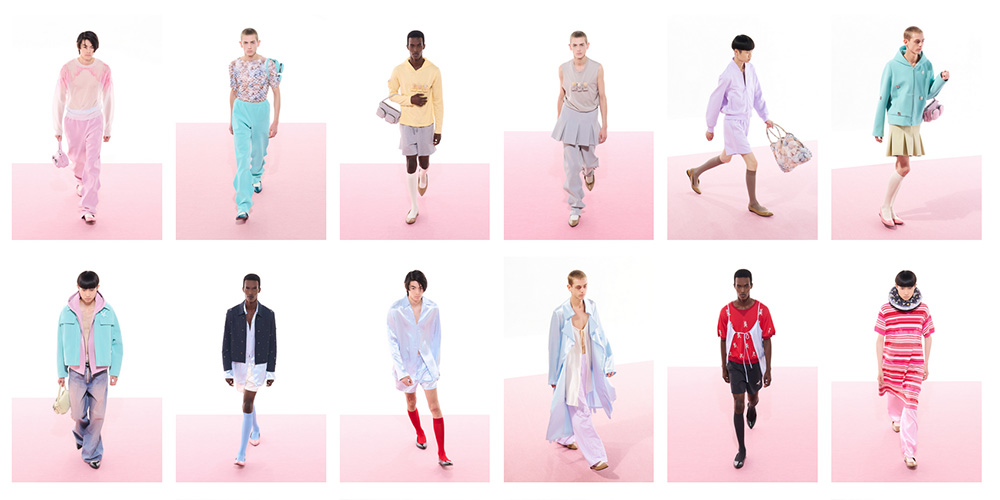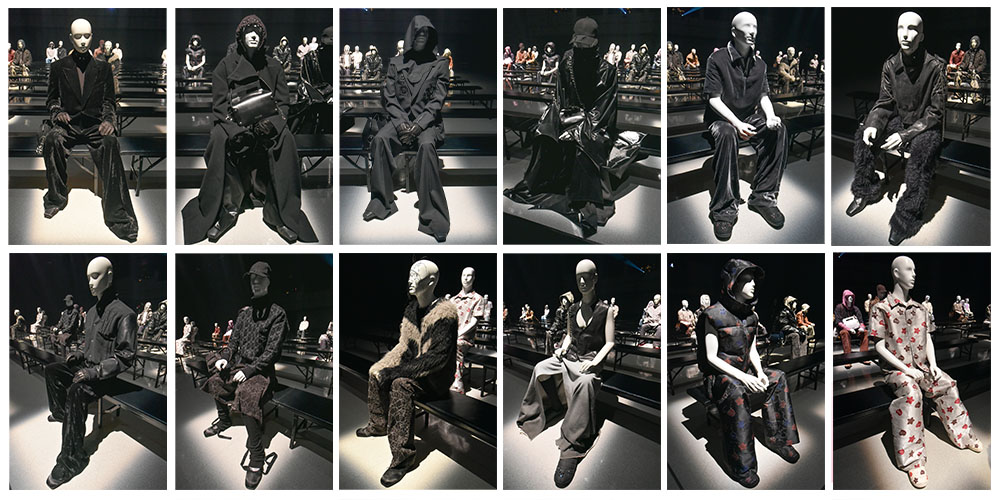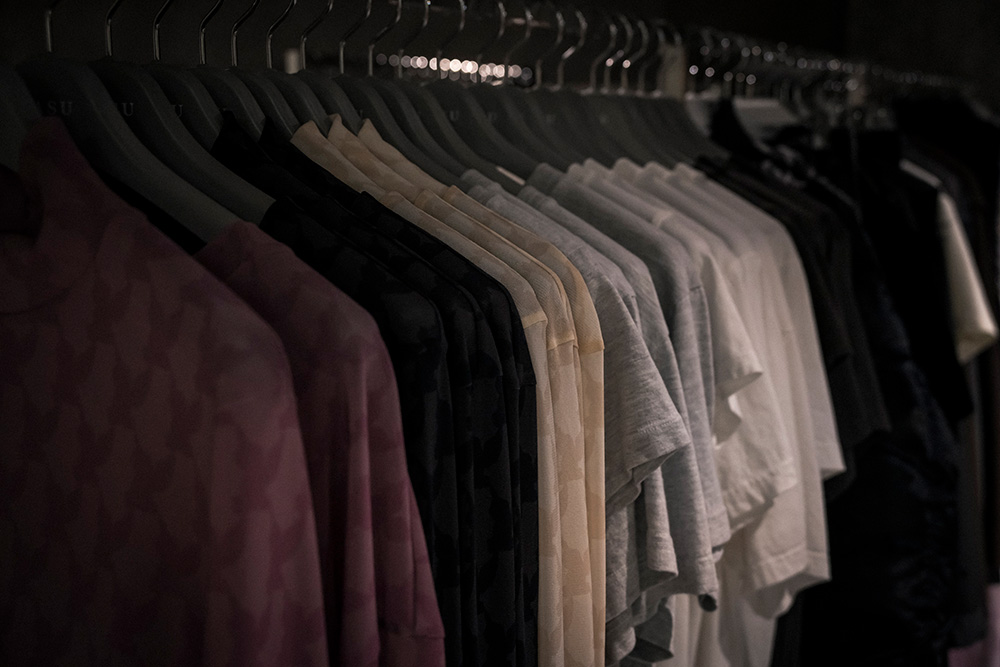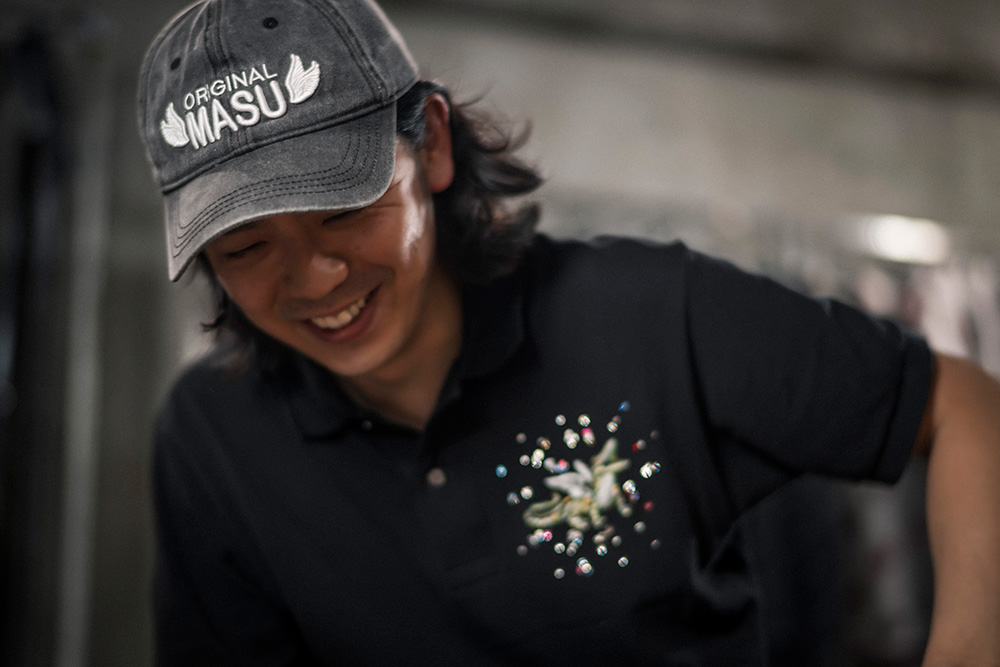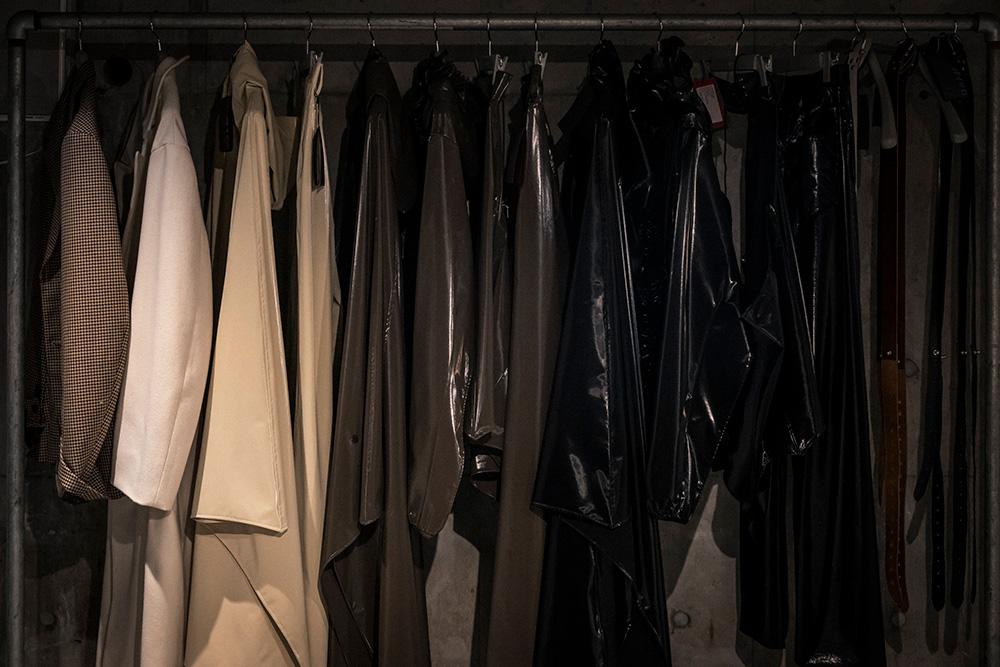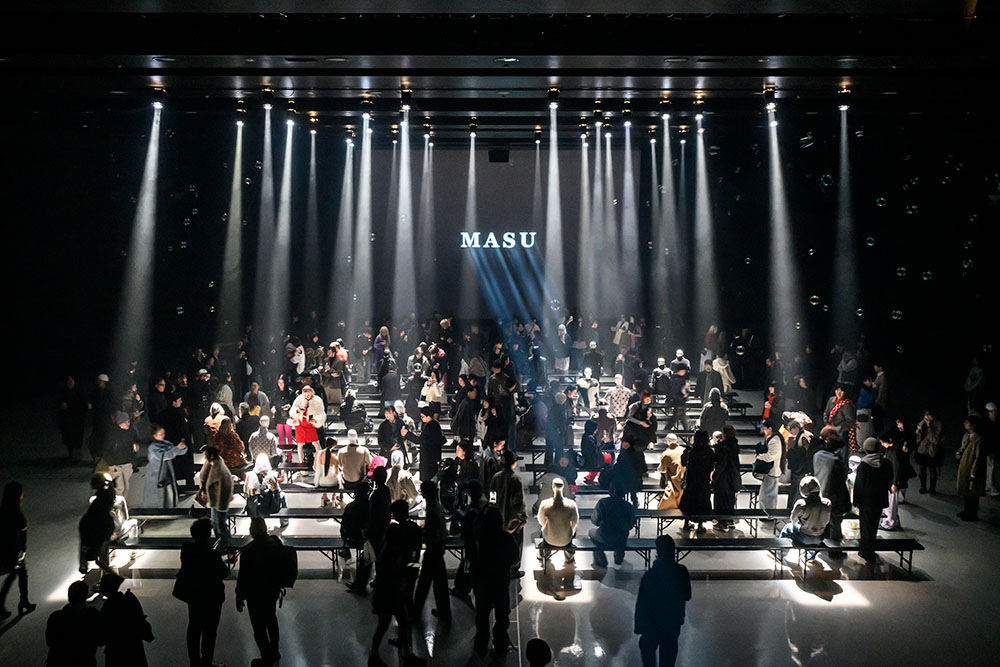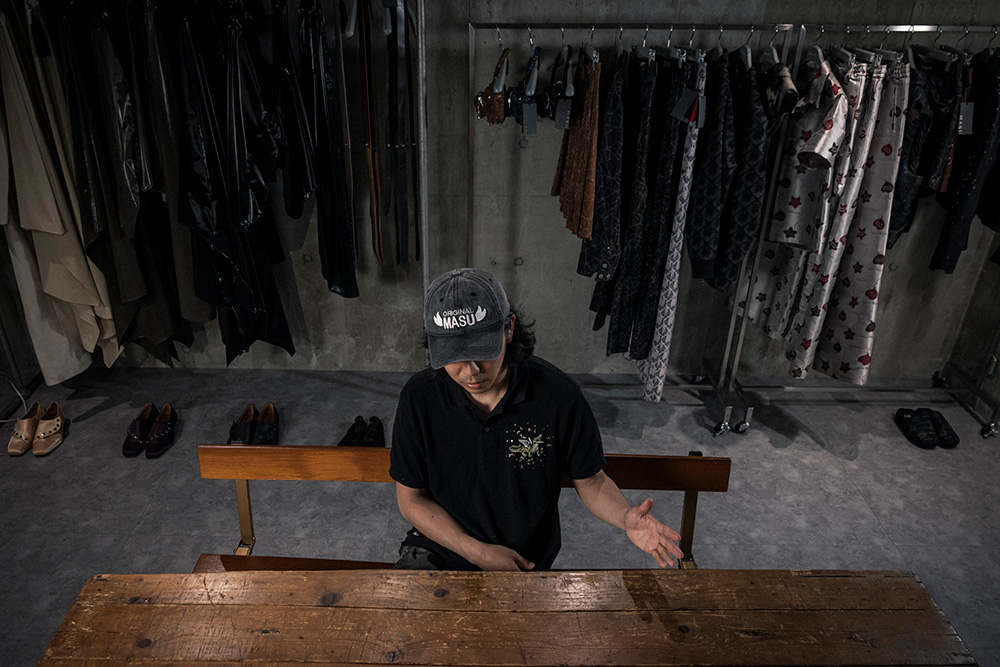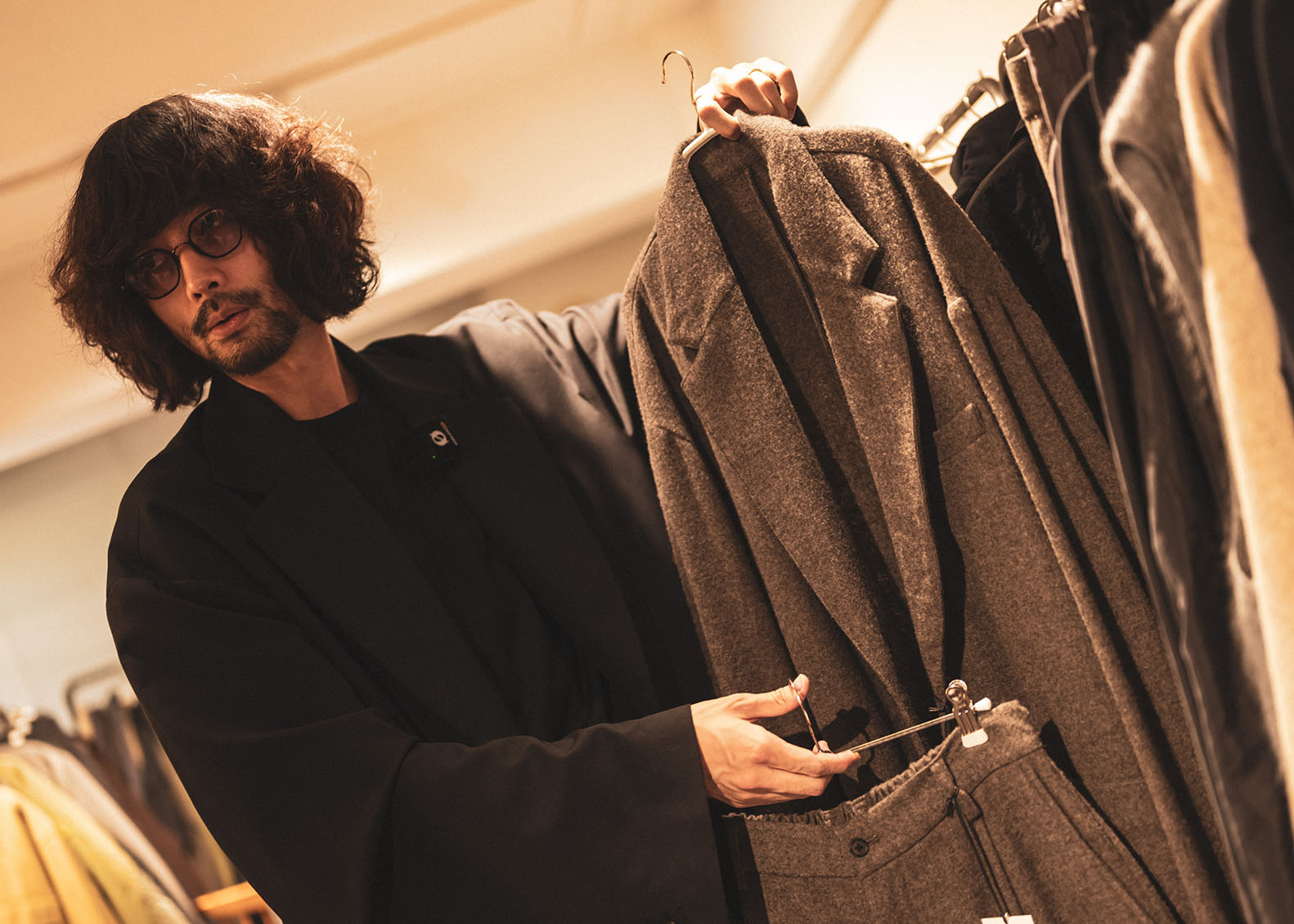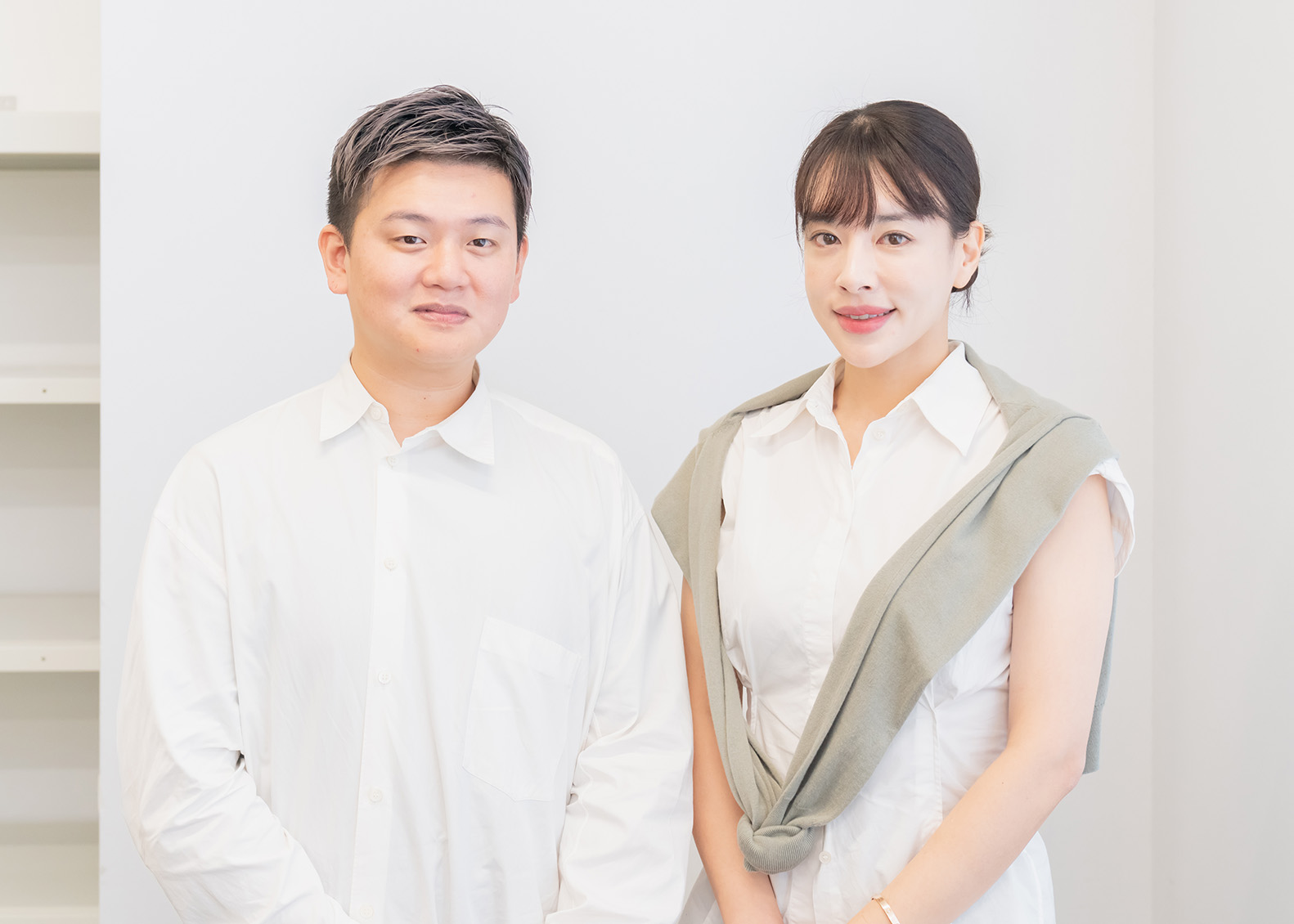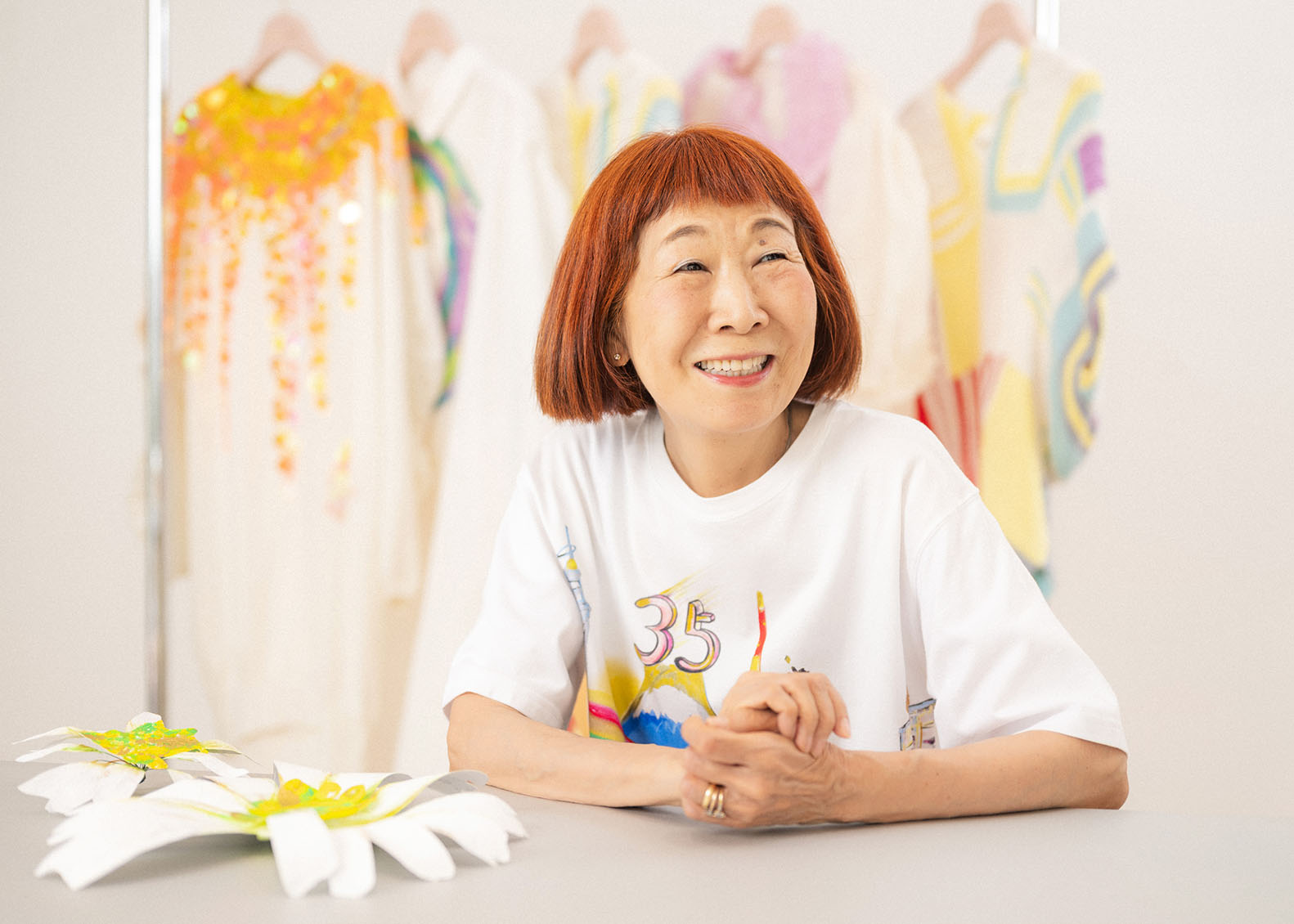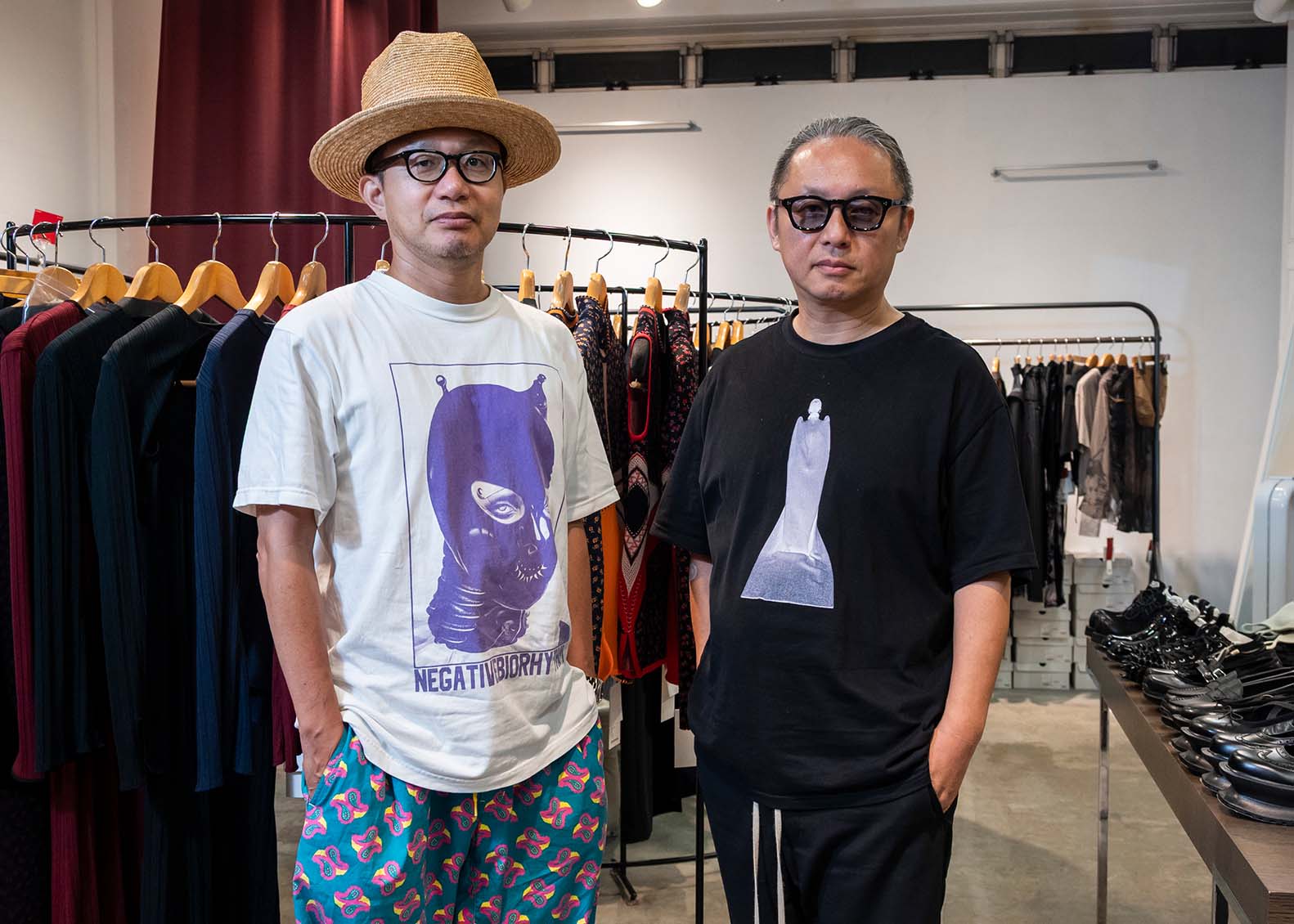Shinpei Goto
Since its establishment, M A S U has quickly become one of Tokyo’s leading brands, and was awarded the FASHION PRIZE OF TOKYO 2024 last year. In January this year, the brand held its first overseas catwalk show in Paris. All eyes are on how the brand will increase the number of MASU BOYS, who love the brand, in overseas markets in the future, we spoke with designer Shinpei Goto, who is about to hold his second runway show in Paris, about the brand’s past and future.
Have you always wanted to be a designer since an early age?
Rather than having a strong desire to be one, I had a vague thought I would become a designer. I loved to draw, and I often wished there were more of what I wanted, so I naturally took the path of a designer. I have always had a strong desire to create things.
What do you see is the driving force behind manufacturing?
The joy of creation. Thinking of new fabrics and patterns, or did the sample coming out the way I wanted? Every moment is fun to capture. There are moments when I have a hard time with my thoughts, but that doesn’t mean I have to suffer through it. The driving force is to have fun at every moment, until the piece of clothing is a finished object.
You have a definite collection theme each season, right? How do you decide on those themes?
What triggers me to think up the themes is the questions I have, things that bother me, and wishing that things were more the way I wanted them. I break negative thoughts with humor and love. Sometimes I do it for oneself, and sometimes it is for others or my predecessors.
The 24AW collection started from the feelings of loneliness I felt while creating alone. I came to realize that loneliness is not only “dark and sad” but also “a sparkling time when you are pushing yourself forward”. So, I wanted to look positively at the things that the public think of as dark, such as loneliness, rain, overcast weather, and bats. I wanted to express the spider’s web as if it were sparkling with dew after rain.
What does fashion mean to you?
I would like to say it is very important because I have experienced salvation through my clothes, but I don’t want to raise the hurdle for fashion. I want everyone to be free to use it as they see fit. I believe that clothing is not a tool that makes people sad or hurt, but rather something that enriches life and makes living joyful.
I feel that your relationship with your customers is different than with other brands
I write product descriptions for all of my products, our stores communicate them well, and we have customers who read them carefully. They remember the products better than I do. I proposed the name “M A S U BOYS” for these customers. Naming things develops a sense of unity and camaraderie. I thought it would be good to have such a thing in fashion as well.
How do you see the fashion market in Tokyo?
I get the impression that it is going around in circles and not many people are trying to move on. It is a mature market where it is statistically possible to know what will sell and what will succeed, and it is possible to imitate others. Social networking is used to create and sell products regardless of the size of the brand. This situation is lukewarm and surely is going to end. I think it’s good that more people are dissatisfied with the completed clothes culture and the status quo. I want more people to be able to do something stronger.
What is your current business overview?
We have approximately 40 domestic stores, and 10 stores overseas as business partners. While the domestic market is stable and we are growing one store at a time, the overseas market is still in its infancy. After the Paris show, purchases from existing stores and new wholesale customers have increased.
How did you feel about your first show in Paris this January?
I thought that the second show would be the charm, since nobody comes to the first show. I thought it would be enough if we could create a buzz that an interesting brand was now doing shows, and get them into the second show. In fact, many people came even though it was the first time. The response was great, with many interviews from the local media. I felt many challenges from the moment the show ended, I think it was a good debut.
In what areas did you find challenges?
The design, the show itself once you start talking details, you realize all the things that are lacking. But the fact that I felt that way made me see the potential for growth as a brand. I am satisfied with my current creations, but I feel that the present is not the end. I feel that the brand can be further improved from this point on.
How enthusiastic are you for your second show, coming up on June 19?
The theme is about areas that are difficult to touch in the context of fashion. I push myself to self-express, because I have become the person I am today. Please come to the show, which will make you want to update your wardrobe.
What is the outlook for the brand?
What I want to do, and how I want to do it, changes every season. People who enjoy that change are now supporting the brand. There are many collection brands with their own certain style and color. M A S U does not change the core of the brand, but changes freely and has a range of swing. I wonder how this will be evaluated in Paris in the future. I have more and more things I want to make, so M A S U’s manufacturing process is always changing. There is another theory of successful brands in general, but that doesn’t make them new. I want to be a brand that can affirm change.
I make skirts and camisoles, and I use sequins. Clothes with such feminine elements are usually accepted in the Japanese market. From the European market, however, I think M A S U’s collection is a blur with many elements that cannot be categorized. If that fuzzy ambiguity can be accepted overseas, I think it would be a win-win situation. I guess that’s the next challenge. We want to keep challenging ourselves and never stop thinking.
What is the new being that MASU is aiming for?
We want to be a community. We make clothes. We can meet and connect through clothes. M A S U is not so much a giver to the customers, but more like a partner with them. We are establishing such a community in Japan, and I hope it will be the same in other countries.
Interview by Tomoko Kawasaki
Photography by Daichi Saito
[ Instagram ] https://www.instagram.com/masu_officialaccount/
[ Instagram ] https://www.instagram.com/shinpei.goto/

